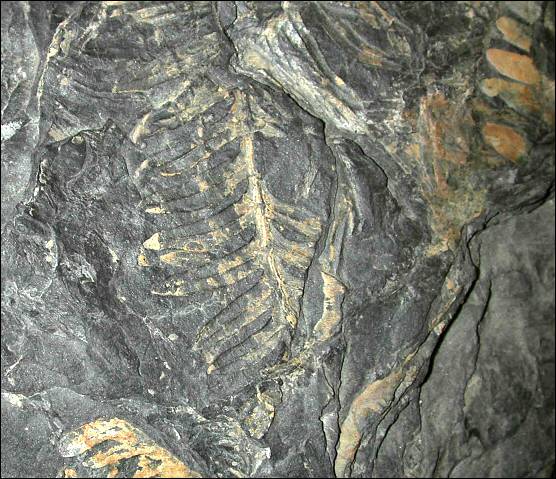

Fossil leaves are not uncommon in some geological formations and help tell something about the environment at the time of deposition. Fortunately, this seems to be true even when the fossil flora consists of extinct species of plants. It's been long observed that certain leaf types go with specific climatic conditions. We can observe this in our own Chihuahuan Desert plants adapted to arid conditions: in many, small leaves with thick, protective surfaces to slow the loss of moisture. Likewise we're more or less familiar with tropical plants with big leaves and a drip point at the end to quickly drain off tropical rains.
By observing a large number of leaf types from plants representing a
wide variety of climates, scientists have come up with a checklist of characters
associated with those conditions. Because differences in the lifestyles among species
affect leaf types, a sample of at least 20 different kinds of fossil plants, as
determined by leaf characters, is necessary to characterize the overall climate. Now,
the normally voiceless fossils still manage to tell a tale.

Contributor: Arthur H. Harris, Laboratory for Environmental Biology, Centennial Museum, University of Texas at El Paso.
Desert Diary is a joint production of the Centennial Museum and KTEP National Public Radio at the University of Texas at El Paso.

Fossil leaves tell a lot about past climates. Photograph by A.H. Harris.